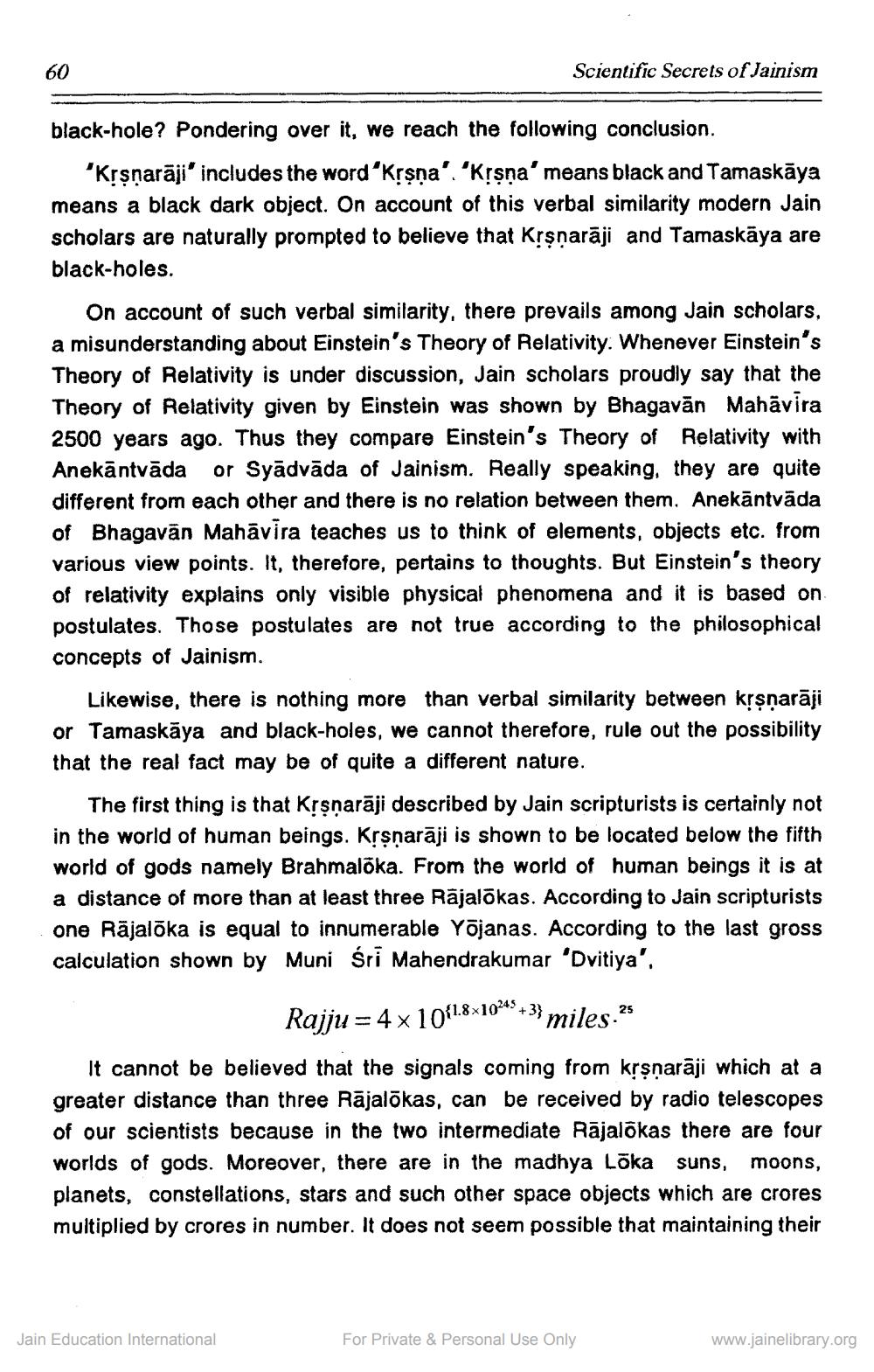________________
Scientific Secrets of Jainism
black-hole? Pondering over it, we reach the following conclusion.
'Krsnarāji' includes the word Krsna'. 'Krsna' means black and Tamaskāya means a black dark object. On account of this verbal similarity modern Jain scholars are naturally prompted to believe that Krşnarāji and Tamaskāya are black-holes.
On account of such verbal similarity, there prevails among Jain scholars, a misunderstanding about Einstein's Theory of Relativity. Whenever Einstein's Theory of Relativity is under discussion, Jain scholars proudly say that the Theory of Relativity given by Einstein was shown by Bhagavān Mahāvira 2500 years ago. Thus they compare Einstein's Theory of Relativity with Anekāntvāda or Syādvāda of Jainism. Really speaking, they are quite different from each other and there is no relation between them. Anekāntvāda of Bhagavān Mahāvira teaches us to think of elements, objects etc. from various view points. It, therefore, pertains to thoughts. But Einstein's theory of relativity explains only visible physical phenomena and it is based on postulates. Those postulates are not true according to the philosophical concepts of Jainism.
Likewise, there is nothing more than verbal similarity between krsnarāji or Tamaskāya and black-holes, we cannot therefore, rule out the possibility that the real fact may be of quite a different nature
The first thing is that Krsnarāji described by Jain scripturists is certainly not in the world of human beings. Krsnarāji is shown to be located below the fifth world of gods namely Brahmaloka. From the world of human beings it is at a distance of more than at least three Rājalokas. According to Jain scripturists one Rājaloka is equal to innumerable Yojanas. According to the last gross calculation shown by Munisri Mahendrakumar 'Dvitiya'.
Rajju = 4 x 10*18x10248 +3} miles. 25
It cannot be believed that the signals coming from krsnarāji which at a greater distance than three Rājalõkas, can be received by radio telescopes of our scientists because in the two intermediate Rājalõkas there are four worlds of gods. Moreover, there are in the madhya Lõka suns, moons, planets, constellations, stars and such other space objects which are crores multiplied by crores in number. It does not seem possible that maintaining their
Jain Education International
For Private & Personal Use Only
www.jainelibrary.org




